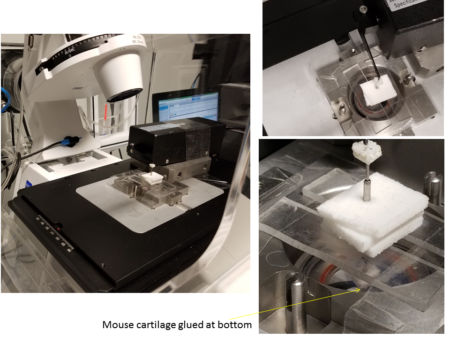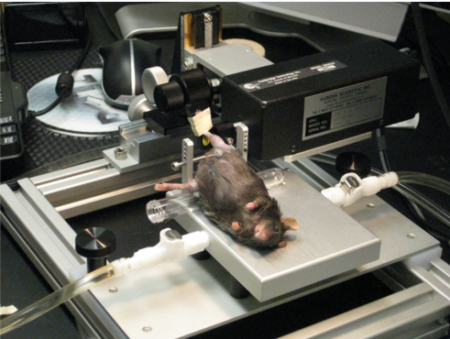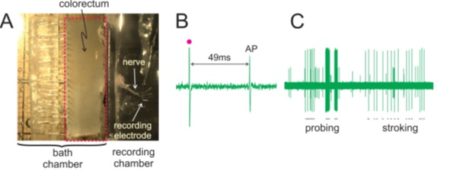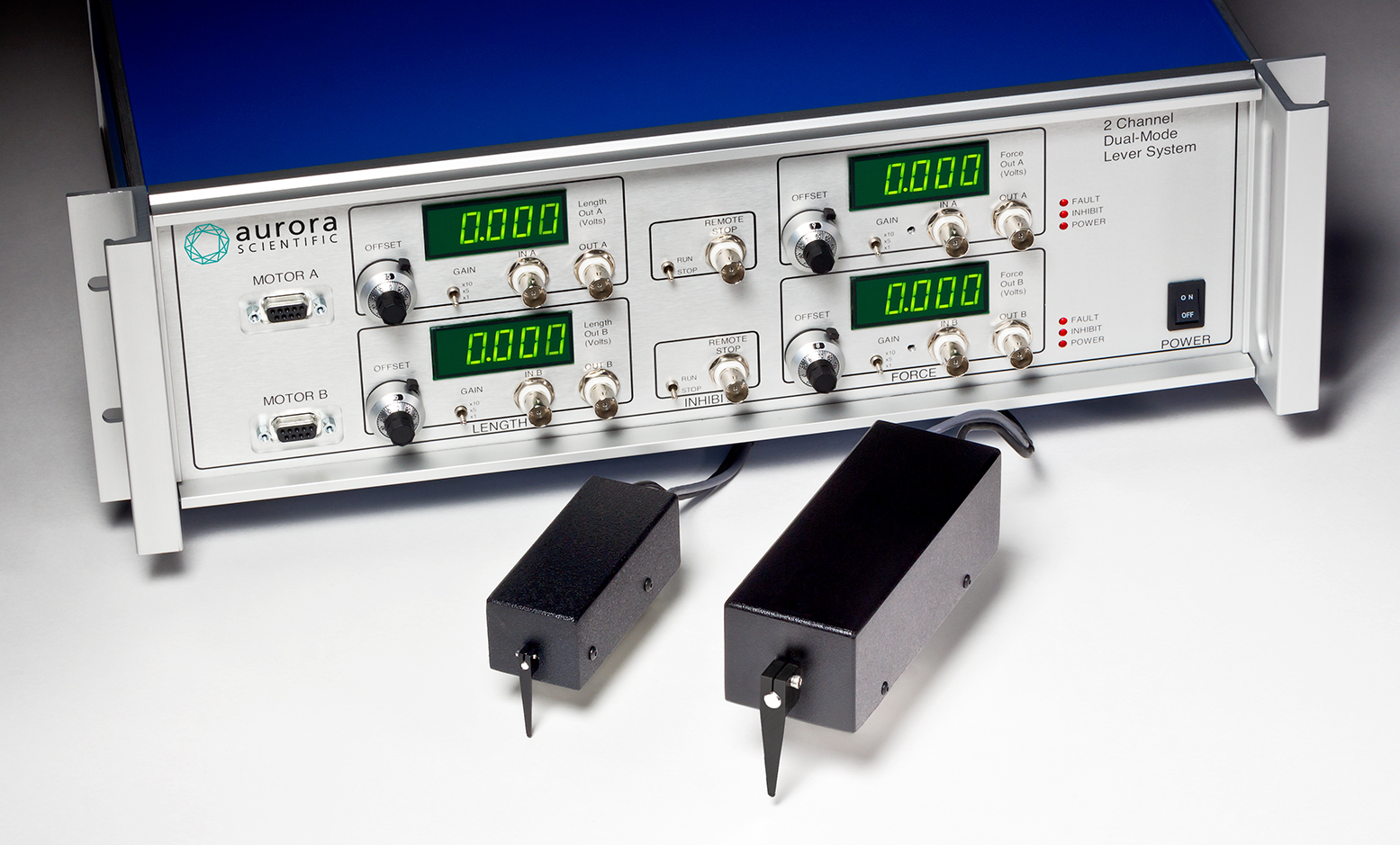Muscle levers and force transducers have long been critical research tools for measuring the mechanical and functional properties of various tissue types. Aurora Scientific’s muscle levers are certainly versatile, with the unique ability to precisely control and measure length and force in in-vivo, in-situ or in-vitro preparations.
However, sometimes a single lever is not enough! Aurora Scientific’s new 300D 2 Channel Dual-Mode Lever System provides the ability to control and measure length and force simultaneously in two similar or completely different preparations. This blog discusses three case studies highlighting how this tool solved three labs’ research challenges to enable them to do research as never before.
Case study 1: Osteoarthritic Cartilage Loading with 2-Channel Mechanical Stimulator
 Dr. Rachel Miller from the Department of Internal Medicine at Rush University, is dedicated to studying osteoarthritis and the mechanisms by which the breakdown of cartilage in joints leads to debilitating pain. Her research focus is on the mechanical loading (weight bearing) of cartilage – possibly the single most important external factor for the long-term health of joint tissue. Through this lens, she assesses cartilage at many levels from monolayer neuron cultures to intact animals.
Dr. Rachel Miller from the Department of Internal Medicine at Rush University, is dedicated to studying osteoarthritis and the mechanisms by which the breakdown of cartilage in joints leads to debilitating pain. Her research focus is on the mechanical loading (weight bearing) of cartilage – possibly the single most important external factor for the long-term health of joint tissue. Through this lens, she assesses cartilage at many levels from monolayer neuron cultures to intact animals.
Her research requires a few features her existing hardware was unable to provide: the ability to use an inverted microscope to visualize tissue while it is being mechanically stimulated, extremely lightweight yet rigid attachments for the indenter and the ability to measure a very wide range of forces at a very high resolution.
The 300D-I Dual-Mode Mechanical Stimulator (along with some custom lightweight attachments) enabled her current and future research, for example allowing her to secure a mouse femur upright and indent cartilage on a glass coverslip while imaging the response on a cellular level.
Case study 2: 2-Channel Dual-Mode Muscle Lever System Allows Study of Diverse Array of Muscles
 A group of researchers at Wright State University are studying skeletal muscle pathogenesis in the context of Huntington’s Disease. They required a system that could model muscle function beyond isometric contraction to better understand the kinetics of relaxation and muscle shortening. In addition, due to their use of several animal and muscle models, having several different instruments would be impractical and unaffordable.
A group of researchers at Wright State University are studying skeletal muscle pathogenesis in the context of Huntington’s Disease. They required a system that could model muscle function beyond isometric contraction to better understand the kinetics of relaxation and muscle shortening. In addition, due to their use of several animal and muscle models, having several different instruments would be impractical and unaffordable.
The 300D effectively solves this challenge with its ability to combine any two dual-model lever from 0.5N to 10N. It integrated seamlessly into their customized hardware and software, significantly improving their ability to model muscle tissue to better understand the progression Huntington’s Disease in rodent models.
Huntington’s disease is an inherited disease that causes the progressive breakdown (degeneration) of nerve cells in the brain. Huntington’s disease has a broad impact on a person’s functional abilities and usually results in movement, thinking (cognitive) and psychiatric disorders.
Case Study 3: Bi-Directional Stretch to Assess Colorectal Afferent Activity Using 2-Channel, Dual-Mode Lever

Again, the 300D was the ideal solution, allowing the researchers to perform bi-directional stretching of the colorectal tissue alongside the sensory recordings in models of chronic pain. In addition, the technology easily integrates with other techniques including optogenetics, molecular biology and MEMS.These are just a few examples of how our equipment is used to study tissue physiology. By combining direct consultation with our in house experts to solve your greatest challenges, we are able to provide our researchers with the necessary tools to fuel ongoing discovery. If you’d like more information, feel free to contact us to discuss your experimental needs.




